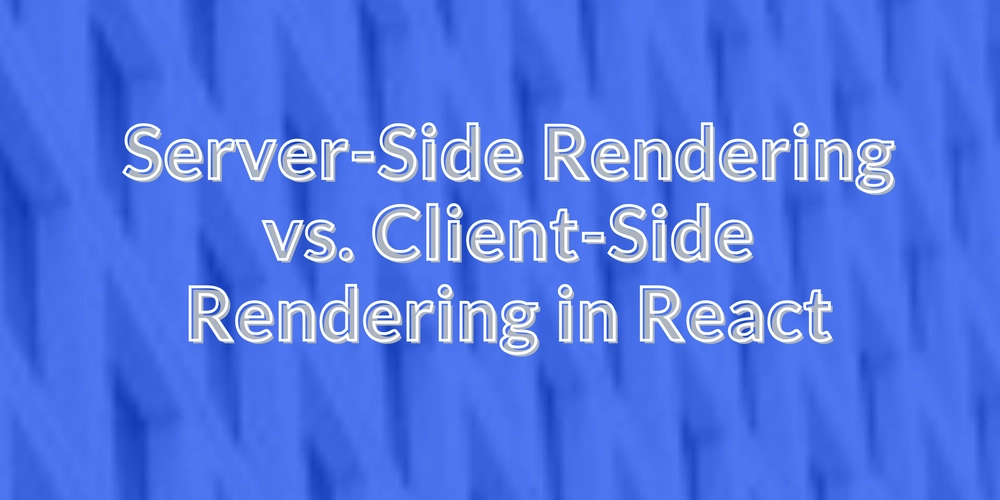Why Investors Are Watching Web3 Development in the Gaming Sector
The gaming industry has for many years been at the forefront of the adoption of new technologies, from the rise of mobile gaming to the advent of virtual reality. And now, the industry is entering a sort of transformation due to Web3. Web3 development services for gaming applications are changing how games are built, played, and monetised. Such services allow game designers to integrate decentralised systems, blockchain, and tokenized economies into their game-building platforms. The result? A player-driven ecosystem in which in-game assets are owned by players, creating new and innovative, decentralised revenue streams. With added attractions like transparent economies and tokenized ownership, Web3 gaming comes under the scrutiny of investors. The scope for scalability and innovation in this space is vast, and with the evolution of the technology, demand for Web3 development services for the gaming industry will only heighten. What is Web3 Gaming? At its simplest, gaming under Web3 refers to games anchored onto the blockchain, allowing players to own, buy, sell, and trade in-game assets as digital property. While in the past, game developers or publishers could control everything within a game, Web3 games give players actual ownership of digital items—characters, skins, and weapons—using Non-Fungible Tokens, or NFTs. They work on the principle of uniqueness, with provable scarcity, and that is why they are transferable—that means they can be traded among different games or even be put up for sale on external marketplaces. Apart from NFTs, many Web3 games also incorporate cryptocurrency, which players can earn through in-game events. These decentralized systems empower players to control their assets within a game and directly contribute to the game's economy. Next, the feature of decentralized governance is also an important task within Web3 games, which are often organized through Decentralized Autonomous Organizations (DAOs), by which players get to vote on decisions about the game, including updates, rules, and further development. In a nutshell, Web3 gaming reimagines the whole player-developer relationship and thus stakes a larger claim for player involvement and economic ecosystems beyond the game. Why Web3 Gaming is Gaining Investor Attention The Web3 game is indeed very attractive to investors because it has great potential in terms of massive growth and innovation. First and foremost, Web3 gaming provides new, more flexible monetization schemes beyond the traditional. For example, play-to-earn (P2E) systems enable players to earn tokens, cryptocurrency, or NFTs for completing in-game accomplishments, which can be sold or traded for real-world cash. This makes game playing more than just entertainment-it attracts millions worldwide, especially in countries with low average income levels, where the potential source of income attracts millions. Secondly, the decentralized aspect of Web3 games significantly provides investors with an entry point into an entirely new economy, where game assets do not exist within closed economies. Web3 assets are tied to real-world markets unlike conventional video games whereby assets could practically be equated to zero outside the game. Hence they do offer liquidity and increased financial transparency. Third, as any emerging technology, Web3 gaming is a potential early investment, with the full possibility of great returns, given the rapidly growing and expanding space it has created. Furthermore, investors are drawn to scalability that could be achieved by blockchain games to adapt to changing trends in gaming. Therefore, investors are coming in to take their place in the future of the new gaming industry as Web3 gaming evolves towards mass adoption. Successful Case Studies Several Web3 gaming projects have already demonstrated that the new model would work in practice, not only for players, but also for investors. A standout among these popular games-in-the-making is Axie Infinity, a pure play-to-earn game based on the Ethereum blockchain. The biggest success within Axie Infinity was marked by millions of users engaged at any point in time along the entire life cycle, generating over $1.3 billion from the game, thus demonstrating the reach of blockchain games scaling and generating real financial opportunities for players. Another great example is The Sandbox, a virtual metaverse where players can buy, develop, and monetize virtual real estate. The Sandbox has been hugely popular, giving birth to huge platforms for virtual real estate investment thanks to high-profile collaborations from brands like Adidas, Snoop Dogg, and many more to follow, all of which have brought in much investment and interest. Immutable X comprises a wide range of games and NFT projects running on it using gasless transaction technology. Gods Unchained is one of these projects, and it is a competitive trading card game. The emphasis of the platform ma

The gaming industry has for many years been at the forefront of the adoption of new technologies, from the rise of mobile gaming to the advent of virtual reality. And now, the industry is entering a sort of transformation due to Web3. Web3 development services for gaming applications are changing how games are built, played, and monetised. Such services allow game designers to integrate decentralised systems, blockchain, and tokenized economies into their game-building platforms. The result? A player-driven ecosystem in which in-game assets are owned by players, creating new and innovative, decentralised revenue streams. With added attractions like transparent economies and tokenized ownership, Web3 gaming comes under the scrutiny of investors. The scope for scalability and innovation in this space is vast, and with the evolution of the technology, demand for Web3 development services for the gaming industry will only heighten.
What is Web3 Gaming?
At its simplest, gaming under Web3 refers to games anchored onto the blockchain, allowing players to own, buy, sell, and trade in-game assets as digital property. While in the past, game developers or publishers could control everything within a game, Web3 games give players actual ownership of digital items—characters, skins, and weapons—using Non-Fungible Tokens, or NFTs. They work on the principle of uniqueness, with provable scarcity, and that is why they are transferable—that means they can be traded among different games or even be put up for sale on external marketplaces. Apart from NFTs, many Web3 games also incorporate cryptocurrency, which players can earn through in-game events. These decentralized systems empower players to control their assets within a game and directly contribute to the game's economy. Next, the feature of decentralized governance is also an important task within Web3 games, which are often organized through Decentralized Autonomous Organizations (DAOs), by which players get to vote on decisions about the game, including updates, rules, and further development. In a nutshell, Web3 gaming reimagines the whole player-developer relationship and thus stakes a larger claim for player involvement and economic ecosystems beyond the game.
Why Web3 Gaming is Gaining Investor Attention
The Web3 game is indeed very attractive to investors because it has great potential in terms of massive growth and innovation. First and foremost, Web3 gaming provides new, more flexible monetization schemes beyond the traditional. For example, play-to-earn (P2E) systems enable players to earn tokens, cryptocurrency, or NFTs for completing in-game accomplishments, which can be sold or traded for real-world cash. This makes game playing more than just entertainment-it attracts millions worldwide, especially in countries with low average income levels, where the potential source of income attracts millions. Secondly, the decentralized aspect of Web3 games significantly provides investors with an entry point into an entirely new economy, where game assets do not exist within closed economies. Web3 assets are tied to real-world markets unlike conventional video games whereby assets could practically be equated to zero outside the game. Hence they do offer liquidity and increased financial transparency. Third, as any emerging technology, Web3 gaming is a potential early investment, with the full possibility of great returns, given the rapidly growing and expanding space it has created. Furthermore, investors are drawn to scalability that could be achieved by blockchain games to adapt to changing trends in gaming. Therefore, investors are coming in to take their place in the future of the new gaming industry as Web3 gaming evolves towards mass adoption.
Successful Case Studies
Several Web3 gaming projects have already demonstrated that the new model would work in practice, not only for players, but also for investors. A standout among these popular games-in-the-making is Axie Infinity, a pure play-to-earn game based on the Ethereum blockchain. The biggest success within Axie Infinity was marked by millions of users engaged at any point in time along the entire life cycle, generating over $1.3 billion from the game, thus demonstrating the reach of blockchain games scaling and generating real financial opportunities for players. Another great example is The Sandbox, a virtual metaverse where players can buy, develop, and monetize virtual real estate. The Sandbox has been hugely popular, giving birth to huge platforms for virtual real estate investment thanks to high-profile collaborations from brands like Adidas, Snoop Dogg, and many more to follow, all of which have brought in much investment and interest. Immutable X comprises a wide range of games and NFT projects running on it using gasless transaction technology. Gods Unchained is one of these projects, and it is a competitive trading card game. The emphasis of the platform makes it appealing to both developers and investors due to its scalability and low fees. These are some of the examples indicating that Web3 games are financially viable and creating a long-term value proposition by introducing blockchains in a way that is innovative and sustainable.
The Role of NFTs and Digital Assets
Part and parcel of Web3 gaming is NFTs, as they give true ownership of digital in-game objects. In contrast to conventional play, which allows players to purchase skins or their in-game assets, such items usually tie back to the game's ecosystem and lack any real-world value outside of such underneath. With NFTs, what were hitherto ephemeral in-game assets are now actual purchases players can acquire, sell, exchange, or even rent within a secondary market. For instance, in-game rare items such as skins or characters or even land might be traded for cryptocurrency, and scarcity is known to increase the value of some items over time. NFTs also allow for digital collectibles-think of them as unique, rare items in the game. The dynamics between supply and demand, rarity, or utility can cause the value of these assets to fluctuate, thereby inviting players to invest in digital goods similar to traditional ones in actual-estate or stock investment. In addition, numerous other Web3 games delve into interoperability, meaning that NFTs can be used from one game or platform to another, thus creating a real open economy. That gives this string that runs across every ecosystem even more liquidity and utilization in terms of current in-game assets as it makes them even more appealing to investors looking for a new asset class.
The Future Outlook: Where is Web3 Gaming Headed?
The future of Web3 gaming is anticipated to be in great incremental and organic growth. Developer giants like Ubisoft and Square Enix test blockchain technology in their games now, and the rest of AAA developers should follow in droves. As technology becomes more matured, Web3 gaming user experience evolves with easier wallet integrations, better onboarding, enhanced graphics, and accessibility for non-crypto natives. Furthermore, clarity in rules toward cryptocurrencies and NFTs should improve, thereby reducing the risks of investments for the developers. All of these point toward the fairly steady life cycle of game economies that focus on creating sustainable and long-lasting ecosystems ensuring value-arbitrage for digital assets, as the hype settles down. Web3 game development is not just a flash in the pan anymore. It is about building economies that may last for the players, where the values of these virtual items are reflected in the real world. With infrastructure refinement and mass adoption in tow, Web3 gaming is likely to settle neatly within the world's entertainment fold. This growing trend hence creates an ever-widening scope for Web3 gaming platform development, which will pivot to empower developers to build secure, robust, and scalable games able to fully exploit the capabilities of the Web3 ecosystem.
Conclusion
Web3 gaming is more than a trend; it signifies a true shift in paradigms for thinking about games, ownership, and digital economies. Web3 gaming hinges on blockchain technology, which creates new avenues for players to own, trade, and invest in digital assets with unparalleled practicality. These developments have ramped up the opportunities for players and developers and gained a lot of interest from investors who see the potential for massive growth. For instance, reputable case studies like Axie Infinity and The Sandbox have paved the way for such credibility into the Web3 gaming arena, while NFTs and digital assets are further creating an economic ecosystem within these games. In the near future, Web3 development for gaming platforms will be pivotal for developers to create the next generation of immersive, decentralized games that can be scaled worldwide. As the industry matures, those who entered earlier might be rewarded greatly, making Web3 gaming a great investment focus in the foreseeable future.




























![[Webinar] AI Is Already Inside Your SaaS Stack — Learn How to Prevent the Next Silent Breach](https://blogger.googleusercontent.com/img/b/R29vZ2xl/AVvXsEiOWn65wd33dg2uO99NrtKbpYLfcepwOLidQDMls0HXKlA91k6HURluRA4WXgJRAZldEe1VReMQZyyYt1PgnoAn5JPpILsWlXIzmrBSs_TBoyPwO7hZrWouBg2-O3mdeoeSGY-l9_bsZB7vbpKjTSvG93zNytjxgTaMPqo9iq9Z5pGa05CJOs9uXpwHFT4/s1600/ai-cyber.jpg?#)














































































































































![[The AI Show Episode 144]: ChatGPT’s New Memory, Shopify CEO’s Leaked “AI First” Memo, Google Cloud Next Releases, o3 and o4-mini Coming Soon & Llama 4’s Rocky Launch](https://www.marketingaiinstitute.com/hubfs/ep%20144%20cover.png)




































































































































































































![Rogue Company Elite tier list of best characters [April 2025]](https://media.pocketgamer.com/artwork/na-33136-1657102075/rogue-company-ios-android-tier-cover.jpg?#)








































































_Andreas_Prott_Alamy.jpg?width=1280&auto=webp&quality=80&disable=upscale#)



























































































![What’s new in Android’s April 2025 Google System Updates [U: 4/18]](https://i0.wp.com/9to5google.com/wp-content/uploads/sites/4/2025/01/google-play-services-3.jpg?resize=1200%2C628&quality=82&strip=all&ssl=1)










![Apple Watch Series 10 Back On Sale for $299! [Lowest Price Ever]](https://www.iclarified.com/images/news/96657/96657/96657-640.jpg)
![EU Postpones Apple App Store Fines Amid Tariff Negotiations [Report]](https://www.iclarified.com/images/news/97068/97068/97068-640.jpg)
![Apple Slips to Fifth in China's Smartphone Market with 9% Decline [Report]](https://www.iclarified.com/images/news/97065/97065/97065-640.jpg)



































































































































